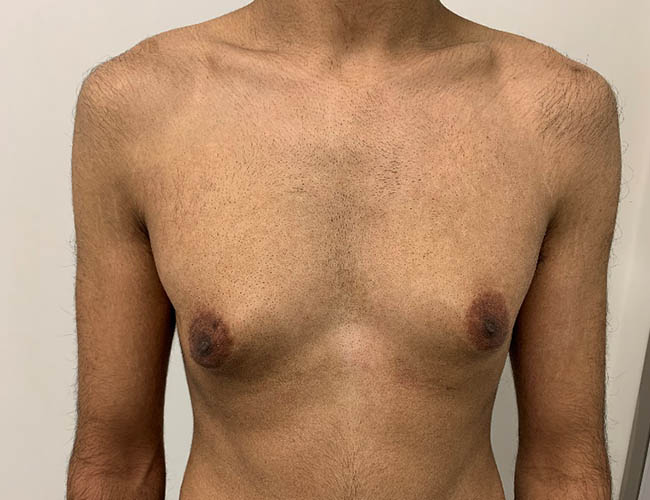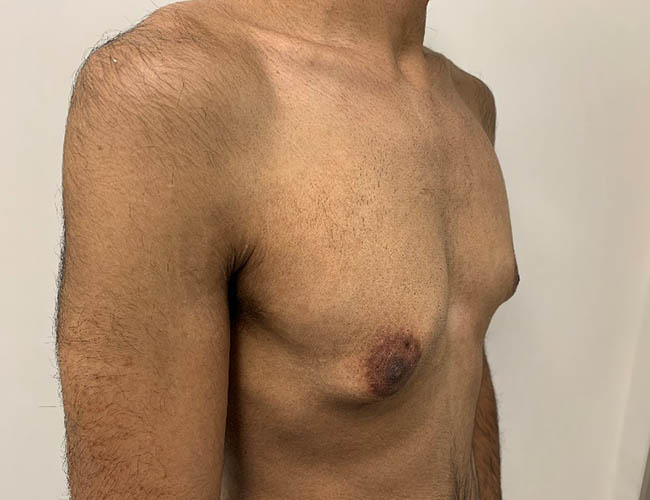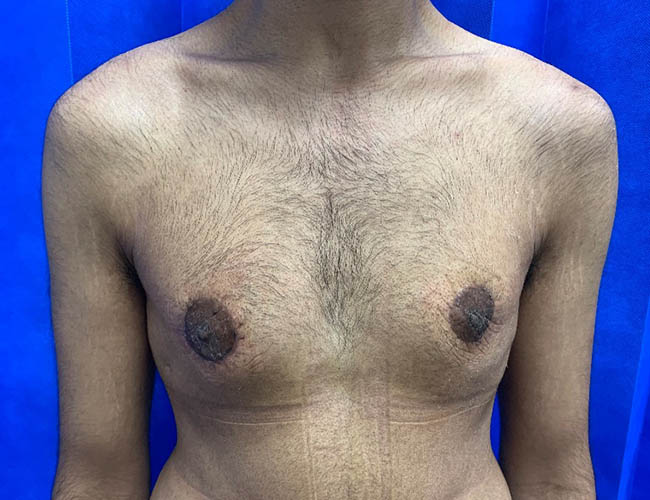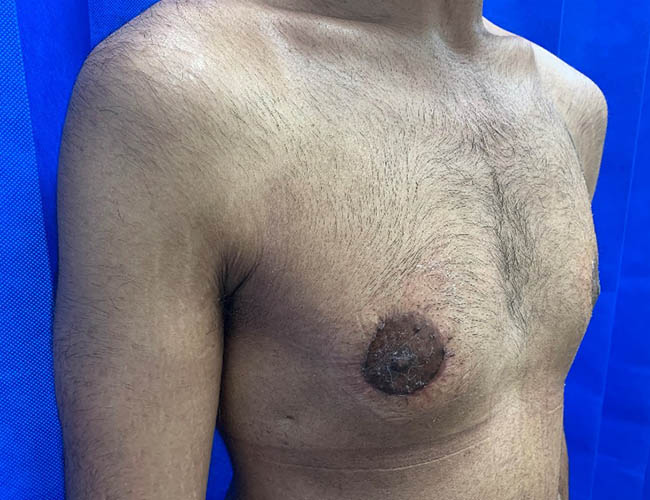Gynaecomastia is swollen male breast tissue either one or both breasts, sometimes unevenly, which is caused by a hormone imbalance.
This imbalance is due to reduced male hormone (testosterone), or increased female hormones (oestrogen).
This occurs normally physiologically in newborns, puberty, and older men. Generally, gynaecomastia is not a serious problem unless a lump develops within it. The lump must be assessed as to whether it is benign or malignant. Men and boys with this condition sometimes have pain in their breasts and may feel embarrassed.
Gynaecomastia may go away on its own. If it persists, medication or surgery may help.
Normal Physiological
Medications include – anti-androgens to treat enlarged prostate, prostate cancer, and spironolactone, flutamide, finasteride
- Anabolic steroids
- HIV medications
- Anti anxiety medications such as Valium
- Tricyclic anti depressants
- Antibiotics
- Ulcer medication such as cimetidine
- Cancer treatment
- Heart medications such as Digoxin and Calcium channel blockers
- Metaclopramide
Other substances are –
- Alcohol
- Amphetamines
- Marjuana
- Heroin
- Methadone
Other conditions –
- Hypogonadism – Klinefelter syndrome, pituitary insufficiency
- Aging
- Tumours
- Hyperthyroidism
- Kidney failure
- Liver failure
- Malnutrition
Management
Management of Gynaecomastia is to initially rule out other differential diagnosis such as male breast cancer.
This involves clinical examination and a breast ultrasound and mammogram if appropriate.
Testicular Ultrasound if clinically appropriate.
Blood tests to rule out a variety of conditions which can present as gynaecomastia.
Treatment
Most cases of gynaecomastia resolve over time without treatment. If gynaecomastia is caused by an underlying condition, that cause will require treatment first.
Medications that are useful reduce oestrogen such as Tamoxifen and aromatase inhibitors (Armidex).
Surgery options include –
- Liposuction
- Subcutaneous Mastectomy performed through periareolar incision, or as a horizontal incision low on the chest wall when there is excess skin that cannot be taken in by a purse string suture around the periareolar margin.
A compression vest is best worn after the surgery for 4-6 weeks, and reducing upper body movements is advisable for a similar period of time.




